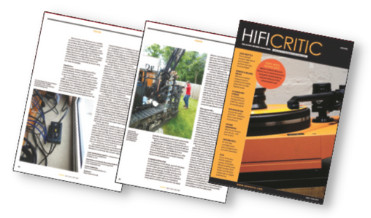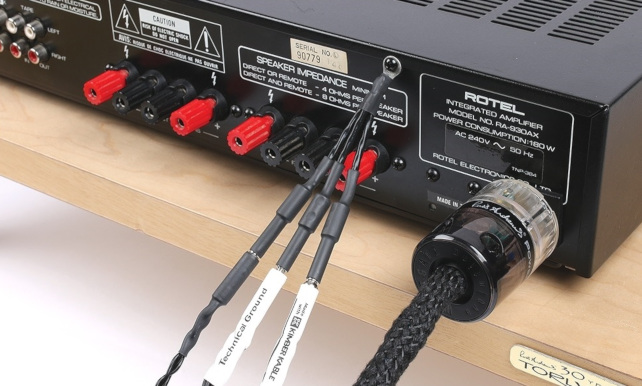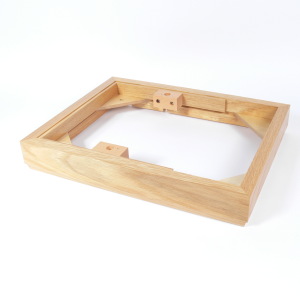System Grounding from Hi-Fi Critic
Monday, 27th December 2021
The Oct-Dec edition of the Hi-Fi journal Hi-Fi Critic features an in-depth article about system grounding, including the writer’s experience of various solutions.
 As “one of the world’s foremost experts” in the field of system grounding, Russ, along with Ben Duncan, was asked for advice, and our own Grounding System was reviewed as part of the process. The author, Kevin Fiske, also recommends our Grounding Guide (available here) to gain a clearer understanding of the process.
As “one of the world’s foremost experts” in the field of system grounding, Russ, along with Ben Duncan, was asked for advice, and our own Grounding System was reviewed as part of the process. The author, Kevin Fiske, also recommends our Grounding Guide (available here) to gain a clearer understanding of the process.Noise can come from external sources – general ‘muck’ put on the mains by external factors before it even reaches our household supply, for example from neighbouring houses - and can also come from internal sources such as the Hi-Fi system itself and from noisy electronics such as fridges and Wi-fi routers. The author notes Ben Duncan’s suggestion that poorly-designed power supplies are one of the worst culprits.
Once injected into the system – both via the mains and as airborne RFI via the ‘antenna effect’ of cables – noise is then distributed around the (interconnected) system. Importantly, system casework also acts as an antenna and, where that casework is connected to the component’s chassis, noise can bleed into delicate audio signal pathways.
System grounding is one way of addressing this noise; filtering, cables and BMUs are the others we offer.
The most efficient way to divert this noise is to make a connection between the casework and a path to ground, either via the mains, using a grounding point on a socket, or ideally via an earth spike, or spikes, in the garden.

Ground cables connected to the back of a Rotel amp via our Chassis Ground Banana Adaptor
Kevin takes the latter route, installing a number of spikes in a grounding array. The article points out that there are other methods available which use, what he terms, ‘unitary grounding devices’. These are independent devices which act as a synthetic ground through the use of various minerals and metals.
Although a “technically respectable way to burn off noise” and an effective solution, these are “not grounding in the purist sense” - they also tend to be a lot more expensive (see below).
In his tests, all the solutions brought a clear and similar level of improvement to audio quality. In the case of the Russ Andrews SuperRouter and Technical Ground cables, connected to his external grounding array, “the sonic gains were striking, with the system sounding more dynamically expressive, tonally richer and with a soundstage offering much improved dimensional resolution”.
The total cost of the RA system was £1200, including the cost of installing the grounding array in the garden. By comparison, and to achieve similar (but not better) results, the minimum cost for the alternative discrete modules is £1900, and that’s for a single unit that will ground a maximum of two components, excluding cables.
In their favour, the discrete grounding devices offer a simple solution without the need for an external spike, but if that is an issue, the Russ Andrews system can be installed using a wallsocket ground, with similar improvements. So it seems we can fairly conclude that both systems are similarly effective, but the RA route costs significantly less for the same level of performance.

Magazine: Hi-Fi Critic
Issue: Oct-Dec 2021
Read more about SuperRouter here
Read The Audiophile Man review here
Find out more about Grounding here
Written By Simon Dalton






















